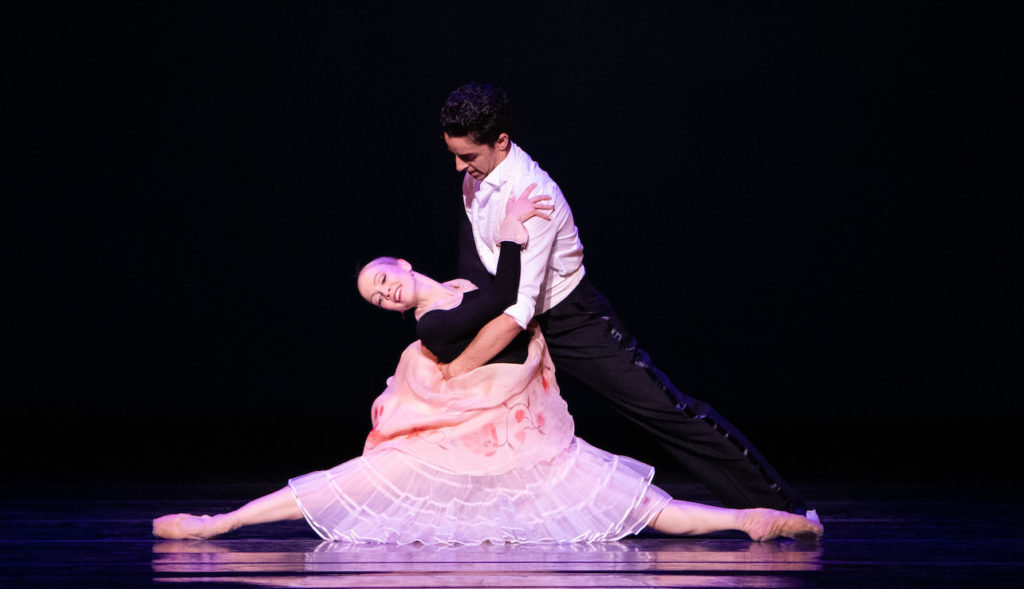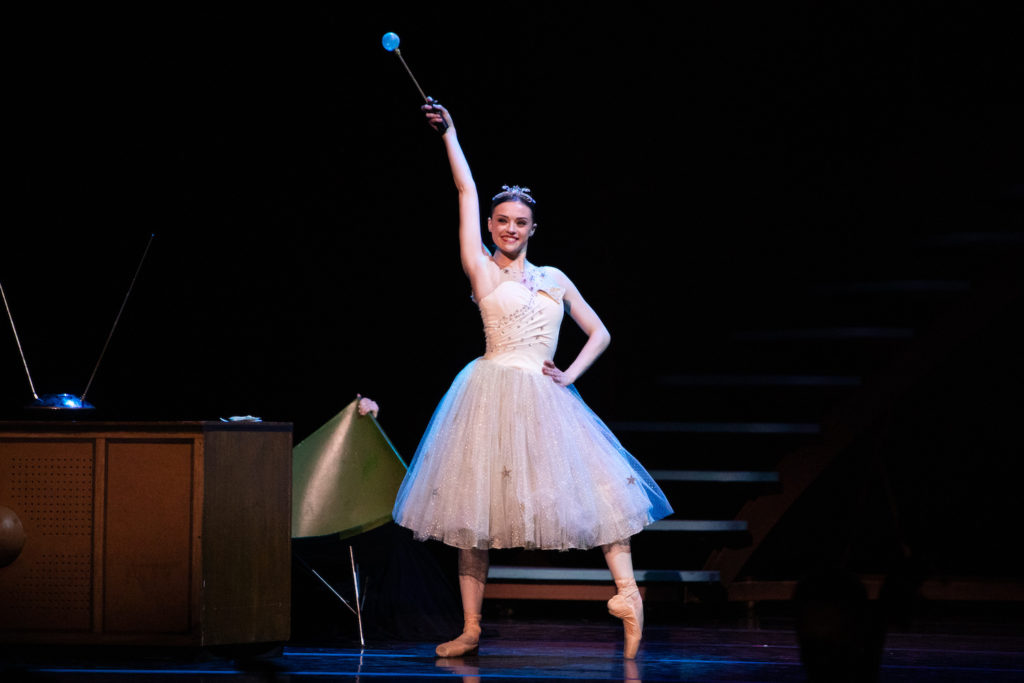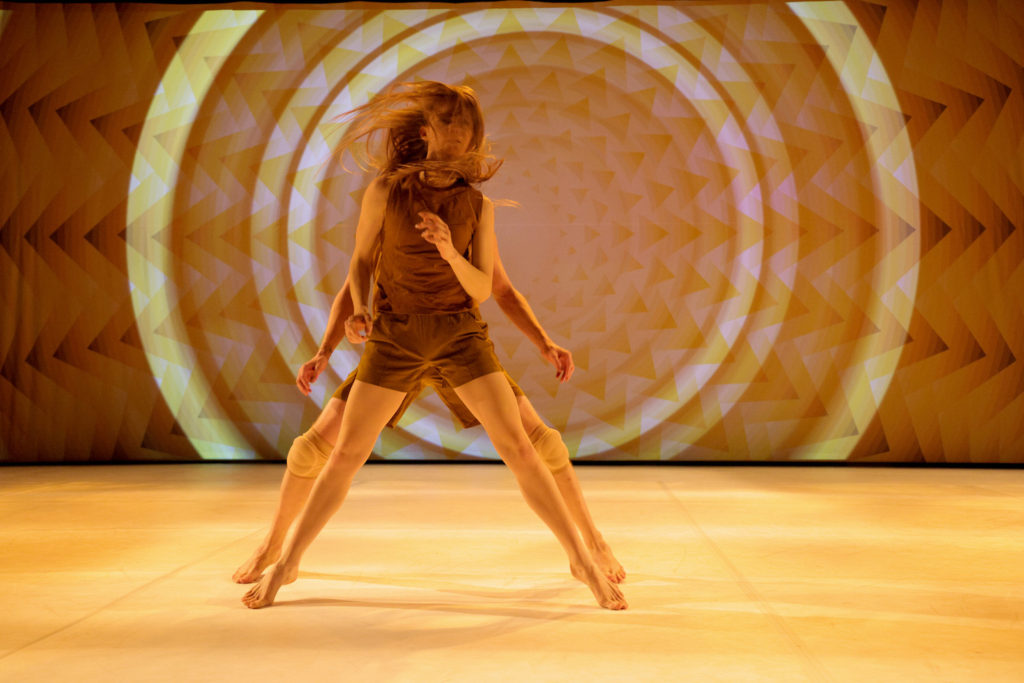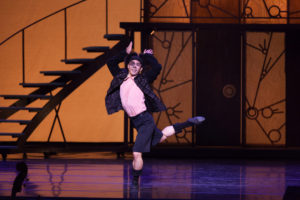Winnipeg: A ballet favourite and farewell, and a contemporary premiere - Vancouver Ballet Society
- Home
- City Reports 2020 - 2023
- Winnipeg: A ballet favourite and farewell, and a contemporary premiere

By Holly Harris
The Royal Winnipeg Ballet closed its season with one of the most popular contemporary works in its repertoire, Val Caniparoli’s A Cinderella Story, still swinging as hard as it did during the company’s world premiere in 2004. Set in the halcyon days of the 1950s, and based on a libretto by Sheryl Flatow, the 135-minute (including intermission) narrative ballet is inspired by a 1957 television broadcast of Rodgers and Hammerstein’s musical Cinderella. Caniparoli re-imagines it as a funky tale of Nancy, a.k.a. Cinderella, who wins the heart of her Prince Charming, ballroom dancer Bob, at the high-society Winter Dance.

The show’s backbone is its brilliant score featuring hit songs by Richard Rodgers, arranged by legendary Winnipeg jazzman Ron Paley. Paley’s live 24-piece big band, tucked into a raised orchestra pit, performed classics including The Sweetest Sounds, Thou Swell, Isn’t it Romantic, and a tango version of The Lady is a Tramp that serves as a leitmotif for the Stepmother.
The RWB’s classically trained dancers proved their mettle at seamlessly morphing between the San Francisco-based choreographer’s mash-up of ballet, Broadway, ballroom, and jazz dance styles. Pristine pirouettes, pointe work, and carefully executed lifts bleed into Latin samba rolls, hand jives, body isolations, hip swivels, shoulder shrugs, and flexed feet, with the dancers maintaining equilibrium throughout despite constantly shifting centres of gravity.
Elizabeth Lamont in the title role began her emotional trajectory as an innocent ingénue who dances through life’s travails — including the arrival of her Father’s haughty new wife and her two bullying daughters. Lamont delivered a particularly tender pas de deux with her pilot father (Liam Caines) that instilled all-too-real humanity into the otherwise fantastical work.
Stephan Azulay brought swaggering ease while oozing macho sex appeal to his role of Bob. He tossed off Caniparoli’s intricate jazz combinations during his extended solo at the dance studio with aplomb; his mock horror as the ensemble of pink-frocked women vie for his affections was priceless.

Bob’s stirring pas de deux with Nancy, after her abrupt midnight departure at the ball, was the perfect pandemic duet. The two dancers’ longing for physical and emotional connection as they reach their arms out to each other in darkness under a luminous full moon — never to make contact — evoked what the world has endured since the pandemic’s beginning.
The company’s final show of each season is always bittersweet when it’s the occasion for a dancer to hang up their ballet slippers for good. This time, it was Yosuke Mino’s turn. The beloved dancer, who joined the RWB as an apprentice in 2000, before being promoted to soloist in 2006, reprised one of his signature roles as Nancy’s BFF (best fur friend), Dog, for his swan song.
Mino electrified the opening night crowd in solos that showcased his powerhouse athleticism and unbridled joy, which has lit up the Centennial Concert Hall stage for 20 years. The artist, who also performed the title role in Jorden Morris’ Peter Pan, and soared as the Bluebird in The Sleeping Beauty, among many other roles, forged his artistry at the RWB School Professional Division under the watchful eye of David Moroni. Mino, a company pillar and “elder” holding decades of RWB ballets in his blood and bones, will be deeply missed.
Mino is also an original member of Peter Quanz’s Q Dance, celebrating its 10th anniversary June 1-5 with an online only double bill.

Winnipeg’s Contemporary Dancers wrapped up the season with the premiere of Jolene Bailie’s in between here and now at the Rachel Browne Theatre April 22-24. It was Bailie’s first full-length show for the troupe to be performed in the intimate venue since her appointment as artistic director in 2019. Her earlier production in June 2021, Body and Light, was performed in a pandemic-friendly parking lot with audience members watching from their cars.
Bailie has honed her artistic career creating abstract, deeply reflective, and conceptually derived works. Her latest offering, exploring “dynamics of perceptions and desire,” is no exception. The 50-minute production, performed by a five-member ensemble (a sixth dancer was sidelined due to injury), features lighting by Bailie’s long-time collaborator Hugh Conacher, as well as an original, buzzing electronic score by Emma Hendrix, and truly magical digital projections by visual artist Simon Hughes.
How refreshing to witness dancers once again performing without protective face masks, de rigueur these past two years trying to stay safe from COVID-19. The partnering was up-close-and-personal, including inventive lifts and tightly connected ensemble work.
One recurring motive is the double-edged sword of laughter. The show opens with the dancers breaking into loud guffaws, giggles, and belly laughs only a heartbeat away from mocking cruelty. Their visceral expressions of joy were gradually directed at each other, punctuated by body slaps and finger-pointing, evoking the bullying of a schoolyard. Several of these sections felt overly long, but the display of vulnerability proved to be one of the greatest strengths of in between here and now. Another strength was the choreography’s array of dizzying rolls, athletic lifts, flips, mind-numbing inversions, deep crouches and crawls across the floor, hallmarks of Bailie’s restless choreographic style.
A made-for-the-camera version of In between here and now will be available online June 10-July 3.

